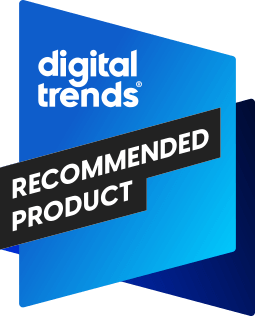Share Share Share Share Email HIPAA audits can feel like a storm looming over your business. The fear of fines, reputational damage, or losing patient trust keeps many healthcare providers on edge. Adding tech support challenges to the mix creates a recipe for sleepless nights.
The Department of Health and Human Services (HHS) doesn’t take compliance lightly. In 2018 alone, HIPAA violations resulted in $28 million in fines. This highlights how serious these regulations are about protecting patient data.

This guide will help you approach audits with confidence. You’ll learn steps to prepare, handle tech challenges, and avoid common mistakes that lead to penalties. Stay tuned—it gets smoother from here! Understanding HIPAA Audits HIPAA audits can feel like a surprise quiz you weren’t ready for, but preparation makes all the difference.
They focus on protecting patient privacy and adhering to strict regulations. Key triggers for HIPAA audits Audits can surprise businesses if they fail to address critical compliance areas. Understanding what initiates them helps avoid expensive penalties.
Complaints from patients or employees often lead to investigations. Even a minor grievance can prompt an audit. Data breaches attract attention quickly.
Unauthorized access or loss of electronic health records (EHRs) often raises concerns. Failure to submit breach notifications on time alerts regulators. Delayed responses indicate non-compliance with HIPAA requirements.
Random audits are conducted as part of the HIPAA enforcement program. Businesses may be selected without prior notice. High staff turnover creates gaps in compliance practices.
Lack of training for new hires raises questions about security measures. Business associates mishandling protected health information (PHI) also draw attention. Partnerships must align with privacy rules and agreements.
Previous violations increase the likelihood of follow-up audits. Regulators revisit entities with a record of non-compliance. Media reports on prominent incidents catch auditors’ attention too.
Publicized lapses put covered entities under close review. For a more detailed breakdown of what auditors look for, refer to the HIPAA audit checklist by Silent Sector to guide your internal reviews and ensure no critical areas are missed. Who conducts HIPAA audits and when The Department of Health and Human Services (HHS) supervises HIPAA audits.
Its Office for Civil Rights (OCR) handles carrying out these checks. These audits ensure covered entities and business associates adhere to HIPAA regulations. Audits happen following reported violations, breaches, or complaints.
Random selection can also prompt an audit. “Compliance isn’t optional; it’s essential,” says health policy expert Anna Gray. Generally, OCR focuses on cases involving critical issues such as patient data leaks or cybersecurity vulnerabilities.
Preparing for a HIPAA Audit Assigning roles and setting up processes lays the foundation for audit readiness. Spotting risks early keeps surprises at bay. Appointing a Security and Privacy Officer Select an individual with extensive knowledge of HIPAA regulations to act as your Security and Privacy Officer.
This individual should manage compliance efforts, recognize risks, and create security protocols to safeguard patient privacy. Ensure this position involves supervising daily operations, handling incident responses, and organizing training sessions for staff. A committed officer can assist in avoiding expensive breaches and maintaining your organization’s readiness for audits at all times.
Performing a HIPAA risk assessment Assigning a Security and Privacy Officer establishes the foundation for compliance, but identifying risks ensures its security. Conducting a HIPAA risk assessment helps identify vulnerabilities in your healthcare data systems. Evaluate electronic health records (EHR), workflows, and IT services thoroughly.
Review who accesses patient information, how it’s shared, and where breaches might occur. Examine every aspect of your operations to comply with HIPAA regulations fully. Identify potential threats like unauthorized access or outdated security measures.
Assess existing safeguards to check if they meet legal standards under the Privacy Rule. Document findings carefully—this serves as evidence during audits or compliance reviews. Use this process to address gaps before violations lead to hefty fines or erode trust with patients and business associates alike.
Respond swiftly when issues arise; time is critical in healthcare compliance! Managing Business Associate Agreements (BAAs) Business Associate Agreements (BAAs) are legally required under HIPAA regulations. These contracts define how third-party vendors, or business associates, handle protected health information (PHI). Covered entities must ensure these agreements address privacy and security requirements.
Failing to maintain proper BAAs can lead to serious compliance issues. Each agreement should outline the vendor’s responsibilities regarding data protection and breach notification processes. Regularly review BAAs for updates in laws or operational changes.
Strengthening these agreements reduces risks linked to tech support challenges within your healthcare operations. Addressing Common Tech Support Challenges Technical issues can feel like a ticking time bomb in healthcare compliance. Stay prepared by addressing them directly with thoughtful planning and effective protocols.
Partnering with specialized providers like Systems-X, a tech support firm , can help healthcare organizations implement secure systems and address tech vulnerabilities before they become audit risks. Ensuring secure data management systems Strong encryption safeguards sensitive information. Encrypt all electronic health records (EHR) to prevent unauthorized access.
Limit system access to authorized personnel only and implement two-factor authentication for extra security. Keep software updated regularly to fix vulnerabilities. Conduct data audits frequently to identify weak points in your systems.
Store patient data on secure servers with proper backup protocols in place. Handling breaches and cybersecurity threats Cybersecurity breaches can cause significant damage to healthcare businesses. Hackers often target electronic health records, exposing sensitive patient information.
Installing reliable firewalls and up-to-date antivirus software reduces these risks significantly. Encrypting data makes it harder for attackers to access critical files during an attempted breach. Regularly changing passwords across systems helps eliminate vulnerabilities in security protocols.
Quick response is essential when a threat occurs. Assigning a team to monitor suspicious activities ensures timely action against threats like phishing or malware attacks. Conducting drills prepares staff for real situations, enhancing reaction times under pressure.
Work closely with IT professionals to establish incident-response plans that comply with HIPAA regulations and protect patient privacy effectively. Training employees for compliance and technical preparedness A well-trained team is your first line of defense against HIPAA violations. Employees must understand compliance rules and handle technology confidently to avoid costly mistakes.
Educate staff on HIPAA basics. Hold training sessions explaining the Privacy Rule, Security Rule, and their responsibilities for patient privacy. Conduct regular technical drills.
Simulate scenarios like phishing attacks or data breaches to test responses and improve readiness. Create clear guidelines for electronic health records (EHR) usage. Teach staff how to access, store, and share patient data securely.
Issue role-specific training plans. Customize education based on employees’ job functions and access levels within your healthcare technology systems. Address common errors with digital tools.
Highlight examples like weak passwords or unsecured devices that could lead to violations in HIPAA regulations. Involve tech support in sessions. Allow IT professionals to guide staff through troubleshooting steps and security protocols directly related to healthcare compliance.
Use case studies as teaching tools. Share real-world examples of covered entities facing penalties due to employee missteps in handling business associates or sensitive information. Schedule periodic refresher courses.
Reinforce compliance requirements annually or after regulatory updates occur within the healthcare industry. Encourage open communication about concerns or gaps in knowledge relating to audit preparation and security measures within your team’s workflow. Test understanding through quizzes or practical tests post-training events to confirm grasp over compliance checklists and audit protocol needs effectively.
Best Practices for Successful Compliance Stay ahead by adopting self-checks, smarter tools, and an anticipatory approach—ready to learn more? Regular self-assessments and internal audits Conducting self-assessments and internal audits is essential for maintaining compliance. Business owners can identify weaknesses before they turn into costly mistakes. Assign team members to review HIPAA regulations regularly.
Ensure they understand updates and their role in compliance. Verify Business Associate Agreements (BAAs) with all vendors. Confirm that these agreements align with current HIPAA rules.
Check for gaps in data privacy protocols every quarter. Review access controls, encryption methods, and system permissions. Assess employee training records annually.
Confirm staff has completed sessions on cybersecurity and patient privacy. Simulate a practice audit at least once a year. Use this exercise to identify potential violations and address them quickly.
Document all findings from assessments and audits in detail. Accurate records can save time during official HIPAA reviews. Allocate resources for tools that monitor suspect activities or unauthorized data access attempts over time.
Immediate alerts help reduce breach risks significantly. Evaluate IT systems’ security, focusing on electronic health record storage integrity monthly. Prioritize safeguarding patient data above all else! Implementing advanced compliance monitoring tools Routine assessments lay the foundation for compliance, but automated tools enhance it further.
Sophisticated monitoring systems identify irregularities in real-time, reducing risks of violating HIPAA regulations. They track user activity within electronic health records (EHRs) and highlight suspicious actions immediately. These tools also streamline audit preparation by arranging critical data logs effectively.
Implement them to monitor unauthorized access attempts or detect unusual behavior patterns among staff or associates. Automated alerts enable businesses to act promptly before small issues grow into costly violations. Conclusion HIPAA compliance can feel like navigating a narrow path.
One mistake, and the consequences may be severe. Concentrate on preparation, training, and reliable security tools to maintain balance. Protecting patient data isn’t just a legal duty—it’s about trust.
Stay prepared, stay watchful, and you’ll handle audits and tech challenges with confidence. Related Items: Ensuring Compliance , HIPAA Audits Share Share Share Share Email Recommended for you The Role of HS Codes in Ensuring Compliance in International Trade Comments.
Technology

Ensuring Compliance: A Comprehensive Guide to Navigating HIPAA Audits and Tech Support Challenges

HIPAA audits can feel like a storm looming over your business. The fear of fines, reputational damage, or losing patient trust keeps many healthcare providers on edge. Adding tech support challenges to the mix creates a recipe for sleepless nights. The Department of Health and Human Services (HHS) doesn’t take compliance lightly. In 2018 alone, [...]The post Ensuring Compliance: A Comprehensive Guide to Navigating HIPAA Audits and Tech Support Challenges appeared first on TechBullion.















